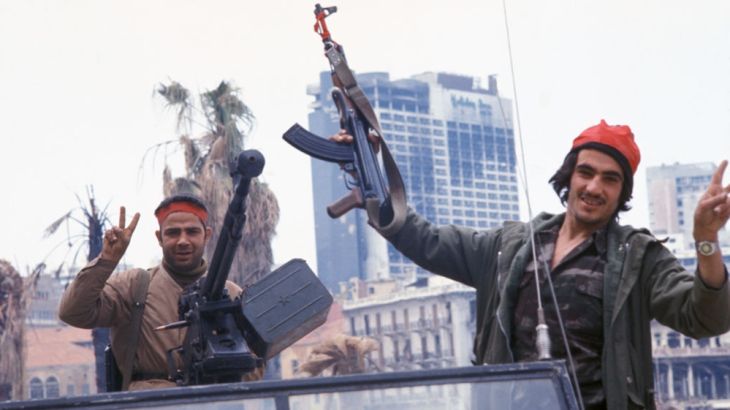
How the Holiday Inn became a symbol of the Lebanese Civil War
A symbol of jet set prewar Beirut, the empty, shell-scarred building still towers above glitzy downtown.
Filmmaker: Abdallah El Binni
For over 40 years, the skeletal remains of the Holiday Inn have stood in central Beirut, a constant reminder of the devastating Lebanese Civil War from 1975 to 1990. The 26-storey hotel opened in 1974 when the city was still a glamorous Middle East tourist destination. Its hotel district was “the playground for celebrities, politicians, diplomats and spies,” according to political geographer Sara Fregonese.
Keep reading
list of 4 itemsRwanda genocide: ‘Frozen faces still haunt’ photojournalist, 30 years on
Underground tunnels found in Israel from Jewish revolt against Romans
Lost in Orientalism: Arab Christians and the war in Gaza
However, all of that changed in 1975 when the war erupted. On one side, Lebanese right-wing parties backed by the United States, aimed to expel armed Palestinian groups from Lebanon. On the other were left-wing parties allied with Yasser Arafat‘s Palestine Liberation Organization (PLO) and backed by the Soviet Union – who saw the right-wing Christians as an extension of Israeli and American influence in Lebanon.
In 1975 and ’76, rival groups fought one another for control of the city – including the Holiday Inn. The hotel became a notorious sniper position during a two-year sub-conflict known as the Battle of the Hotels.
”[The
became one the first significant physical manifestations of the conflict.”]
The violence was triggered by what’s called the ‘Bus Incident’ on 13th April 1975 when fighters from the Christian Phalange Party opened fire on a bus carrying Palestinians as it drove through the Phalangist stronghold of Ain al-Rummaneh. It ignited street fighting and shelling, kidnappings and sectarian massacres across the religious divide. The race to occupy and control strategic positions throughout Beirut had begun.
These groups fought “over the strategic heights” of the hotel, explains Kenneth Morrison, a professor of Modern European History at De Montfort University in the UK. “He who controls the strategic heights could essentially dictate terms.” Although local and foreign journalists covering the war didn’t stay at the hotel, it’s proximity to the front line made it “a part of an urban battle … [It]became one the first significant physical manifestations of the conflict.”
The hotel’s strategic location also cemented the sectarian divide of the city between the Christian East and the Muslim West, according to Professor Fregonese. “The battle of The Holiday Inn completed the division of Beirut through the green line … and this partition remained for the two following decades.”
The former BBC and ITV journalist Jonathan Dimbleby says: “Control the Holiday Inn and you control the region around, so you took the Holiday Inn if you possibly could and that’s why it was such a bloody battle.” He was one of the first foreign journalists to enter the Holiday Inn and document the aftermath of the fighting there.
“Light bulbs hanging down off the wall, wires, chairs smashed up, a piano that more or less survived, the chandelier is all like this broken, as if it’s looking bizarrely like Gargoyles staring down of what humanity have done to itself below. The vision it will not be a surprising vision, but it was surprising that that could happen in Beirut.”
British artist Tom Young, who has done research into the history of abandoned buildings, describes the Holiday Inn as “the most powerful building”. “It’s so famous and so iconic. It’s like a giant tomb which remains in the centre of the city like an unresolved scar,” says Young, whose paintings revive memories of Lebanon’s famous past.
Designed by Andre Wogenscky, a student of French modernist architect Le Corbusier, along with the Lebanese Maurice Hindie, the Holiday Inn was built between 1971 and 1974 and opened to the public just months before the war began.